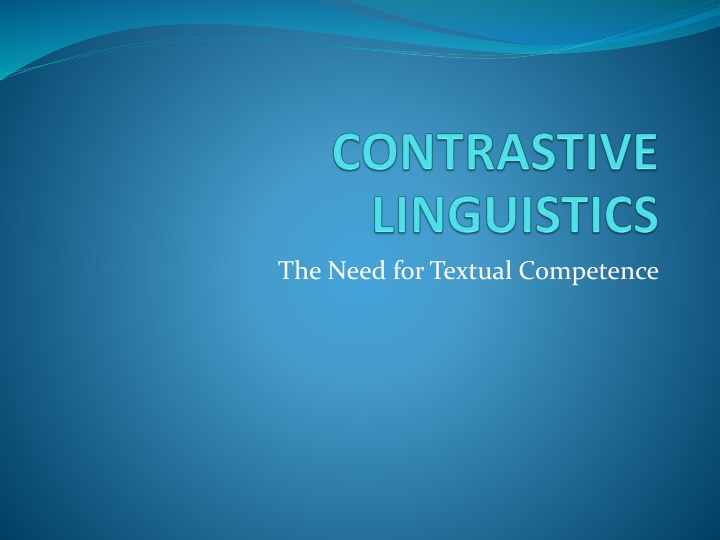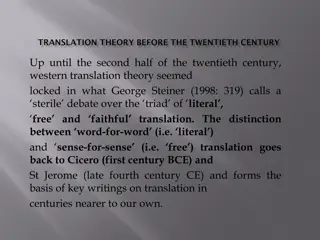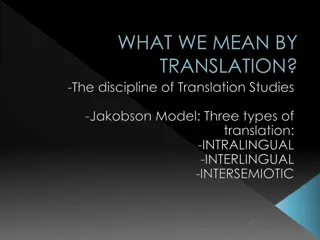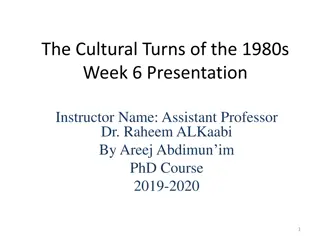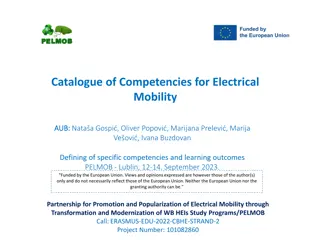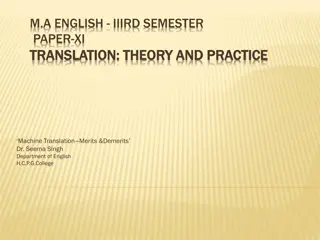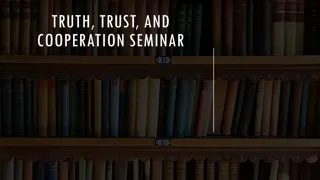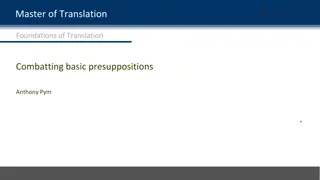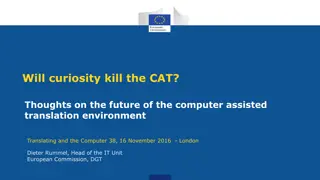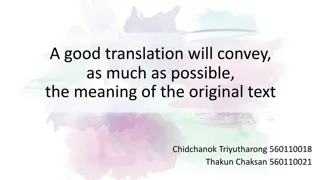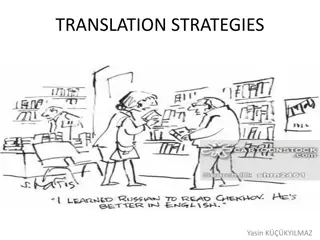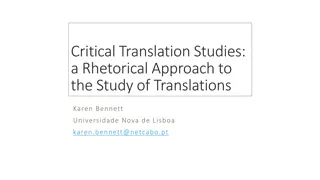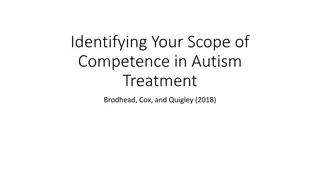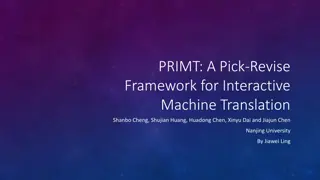The Need for Textual Competence: Translation and Analysis
importance of textual competence through translation assessment and pre-reading strategies. Delve into text processing, hypothesis testing, and understanding the unit of text. Analyze genre, discourse, and text signals in translation for a deeper understanding."
Download Presentation

Please find below an Image/Link to download the presentation.
The content on the website is provided AS IS for your information and personal use only. It may not be sold, licensed, or shared on other websites without obtaining consent from the author.If you encounter any issues during the download, it is possible that the publisher has removed the file from their server.
You are allowed to download the files provided on this website for personal or commercial use, subject to the condition that they are used lawfully. All files are the property of their respective owners.
The content on the website is provided AS IS for your information and personal use only. It may not be sold, licensed, or shared on other websites without obtaining consent from the author.
E N D
Presentation Transcript
Translation & CA Translation is a way of operationalizing CL By focusing on Translators decisions, we can examine Trans. Processes. Thus we can see what is going on inside the mind while juxtaposing texts. In this ch., an article Newsweek is examined. The importance of translation assessment.
Pre-reading A translator exploits a variety of clues: Political leanings of the magazine The ideology of the contributor The title & subtitles World knowledge Register membership (context from which they come & the text typical linguistic features produced in that context)
Text processing The translator assesses the initial elements in terms of their relevance to the progression of the text & requirements of context. Considering the efficiency & effectiveness of text production & reception in general & of translating in particular (semiotics)
Hypothesis testing Establishing text relevance is a hypothesis- testing procedure There are linguistic & contextual constraints. Translators should have a critical sense or an awareness of such issues.
The Unit: Text A text is a set of mutually relevant intentions that serve an overall rhetorical purpose. Translation equivalence is established via criteria related to text-type membership. These criteria inform the kind of compositional plan (structure) & the way a text is made internally cohesive (texture) Socio-textual units: genre & discourse
Genre, discourse & text These relay vital signals Europe is dying . Europe is practically dead Genre (polemic), Discourse (exhortation) text (counter-argument) There constraints regulating the 3 elements use & the language user within them.
Europe is dying . Europe is practically dead Local level: textual analysis: meaningful, socio-cultural insights are generated + reader s appreciation of the constructionof the text features: A. generic: the auctioneer s falling gravel (going, going, gone) B. Discoursal: contentious premise (evaluative situation managing with an axe to grind) C. textual (thesis set up as a strawman gambit to initiate an argumentopposing the thesis cited.
Text - structure Pragmatic factors regulating aspects of text in context such as intentionality for which utterances are used are crucial here These factors will feature prominently in the analysis of the way texts are put together and are made operational Text structure awareness enhances anticipation and thus acts as an effective sign-posting system which guides the reader in navigating textual terrains.
procedure Thesis to be opposed Counter-argument : opposition Substantiation Conclusion Context underlies our awareness of text type which causally determines the compositional plan of the text + structural configurations match a set of text typological foci, serving a no. of rhetorical purposes.
Texture Negotiating texture or the various devices give its basic quality of hanging together: cohesive + coherent Texture realizes given structure formats which are causally determined by higher-level contextual factors ( e.g. text type) It is here that languages differ (realization of context- text chain of interaction) Decisions to reconcile cross-cultural & translinguistic differences.
From Global to Local Interaction between local patterning & global organiztion Intertextual potential of (genre, discourse & text) inform the local (semantic, syntactic & textual) decisions. Intertextuality.
